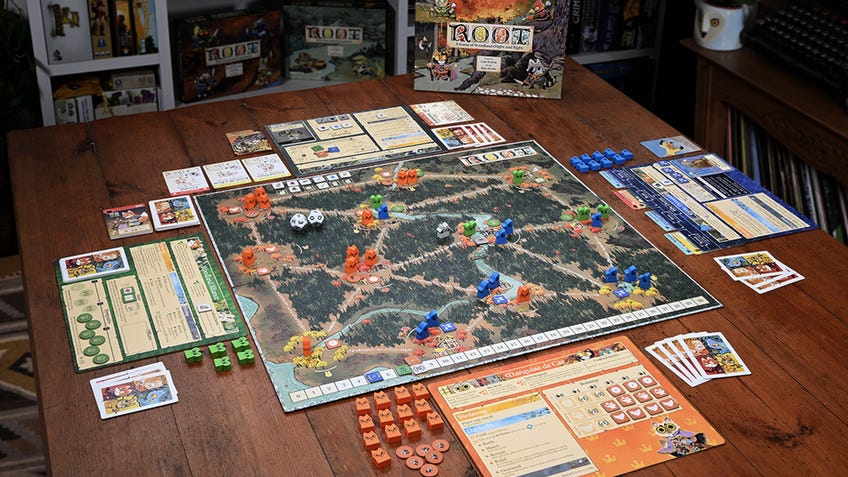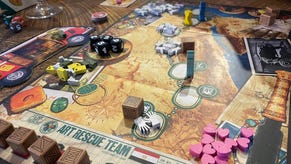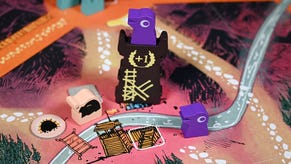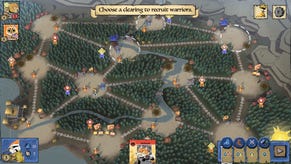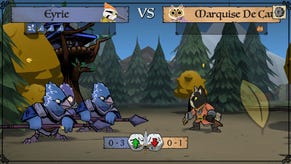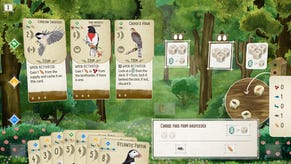How to play Root: board game's rules, setup and scoring explained
Send little cute animals to fight for the dominance of the Woodlands.
Root is the ideal board game for players who are looking to experience different play-styles in a complex system of interconnected parts. Learning how to play Root demands more than just memorising the general rules, it requires time. Even so, our guide to Root should provide more than enough assistance for you to have a thorough idea of how to play Root.
No session of Root is the same because of the game’s distinct factions. Every time a player picks a faction they haven’t played yet, they must learn their specific rules and goals to win the game.
How to play Root
- Player count, game length and overview
- How to set up Root
- How to play Root
- Final scoring and ending the game
Even though we briefly describe the factions in this article, we won’t be covering their specific rules. In case you’re interested in learning more about them, Root’s official Learning to Play manual comes with complete sections about the factions.
Player count, game length and overview

Root can be played by a group of two to four players and a game can last from 40 to 60 minutes. In Root, a game of war and adventure, players represent the four factions that battle for the dominance of the woodland - with each of them having unique gameplay mechanics and objectives. There’s the Marquise de Cat, the Eyrie Dynasties, the Woodland Alliance and the Vagabond. While battling each other, players must create strategies to dominate locations as well as resources.
How to set up Root
Before we start talking about the initial steps you should go through to prepare a session of Root, there are a few elements regarding the board that we should cover. In the basic (Autumn) version of the board, there are 12 clearings, each of them marked by a suit - which are represented by the symbol of a fox, rabbit or mouse. Clearings have from one to three slots for buildings, whilst some have slots with the letter “R” - for ruins. These clearings are connected by roads, which are an important detail to know when it comes to the moving rule explained in the How to Play Root section of this article.
Now, let’s prepare everything you need to start playing the game.
Place the board with the autumn side up, which is intended for beginners. In case you want to learn about the rules of the Winter Map, be sure to check Root’s official Learning to Play manual.
Each player decides the faction they are playing with. In case there are only three players, they must disregard the Vagabonds, and if only two people are playing this time, both the Vagabonds and the Alliance shouldn’t be included as options.
Once the factions have been decided, players should get all the pieces listed on their faction board. Players may also receive faction overview cards to consult.
Because factions have unique rules, players must read their faction boards to set up the necessary elements related to their faction.
Shuffle the shared deck and deal three cards to each player. Place the deck near the board.
On the board, look for the slots marked with “R” and place a ruin marker on them. There are four in total. Ruin slots can become free ones when they are explored by the Vagabond.
Set apart the two custom dice near the board, as well as all the 12 item markers which must be placed on their specific slots at the top of the map.
The last step is to place the score markers on the zero spot of the score track.
It’s important to keep in mind that factions also have their own setup described on their faction board, which designates the initial preparation that must be done. For example, Marquis de Cat must place their keep token in one of the corner clearings. So, don’t forget to follow the steps listed in your faction board setup section.
How to play Root
In Root, regardless of their faction, everyone plays one turn that is split into three phases: Birdsong, Daylight, and Evening. What a player can do in each of these phases is determined by the list on their faction board. Once a player has gone through the three phases, it’s time for the player on the left to play their turn.
Although some mechanics are particular to each faction and you can learn more about them by reading the faction boards, there are three general mechanics that all factions need to perform and are the backbone of the game: moving, using/crafting cards and battling.
Moving
In one of the three phases of a turn, as specified on their faction boards, a player can choose to move the warriors they have in one clearing to another. They can move as many as they want, but the clearing they are coming from must be connected by a road to the clearing they want to move to.
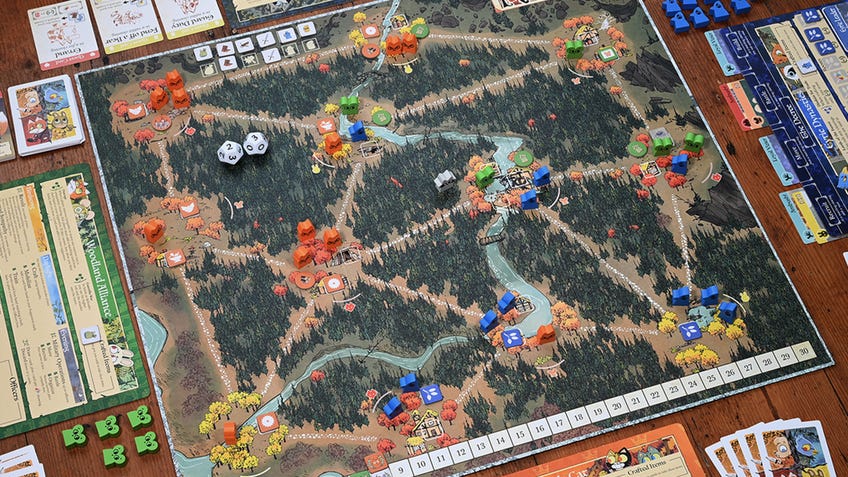
Another condition that must be met in this situation is that the player who wants to move their units must rule either the clearing they are coming from or the one they are going to. In order to rule a clearing, a player must have more warriors and buildings than the other players who can also occupy the clearing. In case of a tie, the clearing is understood as not being ruled, unless the Eyrie are one of the tied factions - as they win rule ties.
Cards
Cards are a crucial element of Root. First, just like clearings, cards have suits too. Besides the rabbit, mouse and fox ones, cards also come with a bird suit. This is a special suit that can be used as any of the other three. So, you can spend bird cards as if they are fox, rabbit or mouse cards, but not the other way around.
Players can find three types of cards in Root. There are regular ones that are used either as a resource to perform actions specific to each faction or crafted to activate effects listed on the card. At the same time, there are ambush cards- which will be further explained in the battling section of this guide - and the dominance cards that we cover in the final scoring and ending the game section.
When performing certain actions, the player needs to use a card that matches the suit of the clearing where they want the action to take place in. Let’s say you’re playing as the Marquise de Cat and want to use the Field Hospitals ability, to save some of your warriors that just died in a clearing with a fox symbol. To use the ability on these warriors, you must use a card with a fox or bird suit to pay for the ability. Whenever a card is used to pay for an action, the effects listed on the card aren’t applied. The card is then placed in a discard pile which can be shuffled back if there aren’t more cards in the shared deck.
When it comes to crafting a card, the rules are a little bit different. Although you must still use a card whose suit matches the one in the clearing you want or have to craft the card in, the condition to craft a card is particular for each faction, depending on different kinds of crafting pieces. The Woodland Alliance, for example, requires activating a Sympathy Token if they want to craft a card. In case they have a Sympathy Token in a clearing whose suit is a rabbit, the card they want to craft must be of the rabbit or bird.
When you craft a card, you activate their effects which can be immediate - represented by a paper box on the card - or persistent, which is represented by a stone box. Immediate effects straight away and then the card is discarded. On the other hand, cards with persistent effects stay in the game facing up near the player that crafted them. It’s important to know that you can’t have more than one of the same persistent effect.
Battling
Battles are another important mechanic in Root since, by battling other factions, one player can rule a clearing. During battles, one player hits the other and for each hit one piece - warrior, tokens or buildings - is removed from the clearing. Every battle has two phases.
In the first phase, the player who wants to battle must choose a clearing where they have any number of warriors and where other factions have pieces as well. The attacker can only battle one player, who becomes the defender, during a turn.
Once the attack is declared, the defender can use an ambush card to deal two hits to the attacker. In case no attacking warriors are left, the battle ends. But, if the attacker also has an ambush card, they can use it to respond to the first one which, then, must be discarded.
Before the battle is resolved, both players can choose to use any effects of their cards, that might deal extra hits for example.
In case none of these two possible actions ended the battle, then it’s time for the second phase. The two dice must be rolled to decide how many hits, or in other words, how many attacks both players land. The highest number is always used as the attacker’s number of hits, while the lowest number is the defender’s number of hits. To resolve the battle, both players must remove their pieces from the clearing based on how many hits they take in the following order: first warriors, then tokens or buildings. For example, the players rolled the dice and they got a two and a one. The defender has one warrior and one token. As the highest number is always the attacker’s number of hits - except when it comes to the Woodland Alliance - both pieces the defender has in that clearing are removed. However, if they had taken only one hit, the warrior would have been taken out first. At the same time, because the defender still rolled a one, the attack must remove one of their warriors as well.
Players can’t deal a number of hits higher than the number of warriors they have in the clearing. So, if the attacker has one warrior and the higher roll is three, they will only deal one hit.
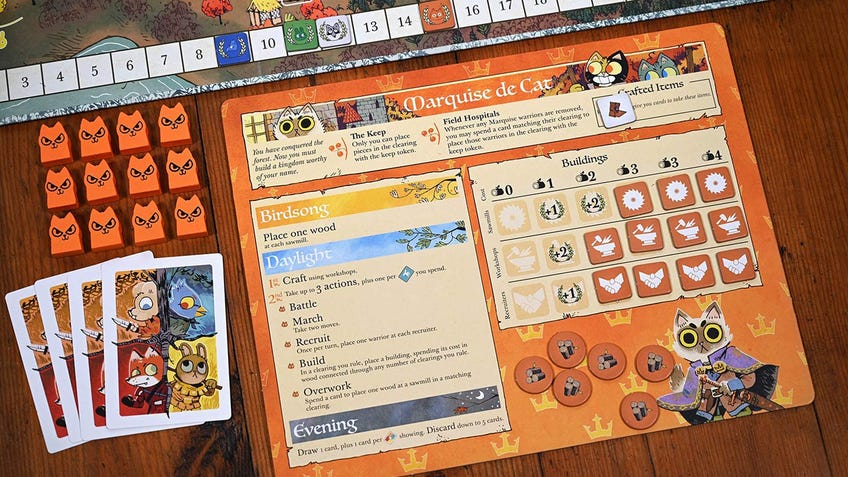
Final scoring and ending the game
A game of Root ends when one of the players has reached 30 victory points or has completed the goal of a dominance card.
Dominance cards can only be played if the player has at least 10 victory Points. Dominance cards give players a new win condition instead of the 30 victory points, which might be a specific mission, such as ruling three mouse clearings. Once activated, this card can’t be removed from the game or changed.
When it comes to scoring victory points, all factions earn them as the result of two different actions. When, as a consequence of battling each other, a token or a building is removed from a clearing, the player whose action led to this removal scores one victory point for each piece. For instance, after a battle, the defending player loses one building and one token, then, the attacking player receives two victory points, advancing their score marker forward on the score track. The second situation is when a card is crafted. A card might come with a value of victory points listed that a player earns if they can craft it. Factions can also score victory points by achieving their own unique faction objectives, which can be found on each faction’s board.
